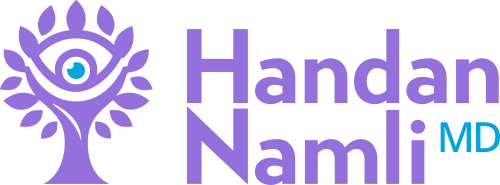Title: Understanding PCOS: Unveiling the Complex Dynamics and Causes
Introduction:
Hello, my Friends! I am here to unravel the intricacies of Polycystic Ovarian Syndrome (PCOS). It affects every 1 of 10 women in their reproductive age. This widely discussed condition often evokes confusion due to its name and misconceptions. In this article, we'll delve into what PCOS truly is, its causes, and the factors influencing its development.
Decoding PCOS:
Let's start by addressing the misnomer – Polycystic Ovarian Syndrome. Contrary to what the name implies, the cysts on the ovaries are not the root cause; they are the result of an underlying issue – ovulation dysfunction. In essence, PCOS is marked by hormonal imbalances rather than the presence of cysts.
The Ovarian Dysfunction:
Visualize PCOS as a communication breakdown between the brain and the ovaries. The brain releases hormones, LH and FSH, where FSH stimulates follicle growth, and LH triggers ovulation. In PCOS, the ovaries exhibit abnormal responses to these hormones, resulting in an imbalance. The ovaries release an excessive number of eggs, diluting the FSH signal, leading to hormonal irregularities. The ovaries compensate by producing more androgens (male hormones), causing further imbalance.
Insulin's Role:
Understanding insulin is crucial in comprehending PCOS. Insulin plays a dual role – facilitating glucose use or storage. Insulin resistance occurs when cells no longer absorb glucose efficiently. The body, sensing low glucose levels, prompts the liver to break down glucose, prompting increased insulin production. Insulin resistance stimulates heightened androgen production, exacerbating the hormonal imbalance in PCOS. While not a direct cause, insulin resistance significantly contributes to the severity of PCOS.
Weight and PCOS:
PCOS can affect women of any body type, but there's a notable connection between obesity and PCOS. Excess fat cells act as hormone factories, producing estrogen and contributing to hormonal imbalances. High estrogen levels hinder proper communication between the brain and ovaries. Obesity worsens insulin resistance, exacerbating the condition. It's important to note that not all women with PCOS are overweight, and not all overweight women have PCOS.
Diagnosis and Symptoms:
The Rotterdam criteria outline the diagnosis of PCOS, requiring the presence of two out of three symptoms:
1. Hyperandrogenism: Elevated androgen levels or clinical signs such as facial hair, acne, or hair loss.
2. Irregular or absent periods: A hallmark indicating clinically significant fertility issues.
3. Polycystic appearing ovaries on ultrasound: Characterized by an increased number of antral follicles, forming a distinctive "ring of pearls."
Understanding Irregular Periods:
Irregular periods in PCOS result from hormone dysfunction, leading to insufficient estrogen production and a lack of progesterone signaling for menstruation. Contrary to popular belief, prescribing progesterone alone does not address the root cause; ovulation is the key to restoring hormonal balance.
Additional Findings:
While not part of the official diagnosis, PCOS often coexists with:
1. Insulin resistance
2. High cholesterol
3. Thyroid or prolactin abnormalities
4. Metabolic syndrome
Conclusion:
This overview sets the stage for a more in-depth exploration of PCOS treatments in our next blog post. Stay tuned for practical insights into managing and addressing PCOS effectively. Thank you for joining me on this informative journey.
